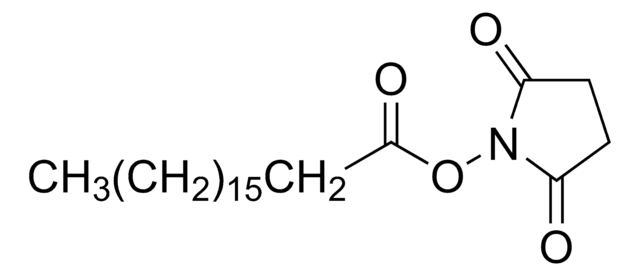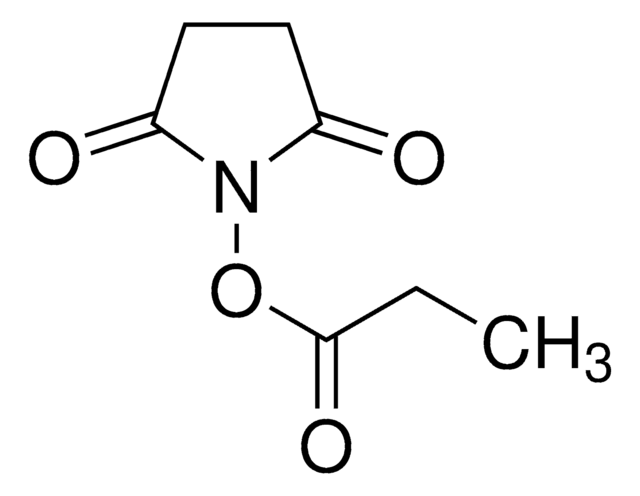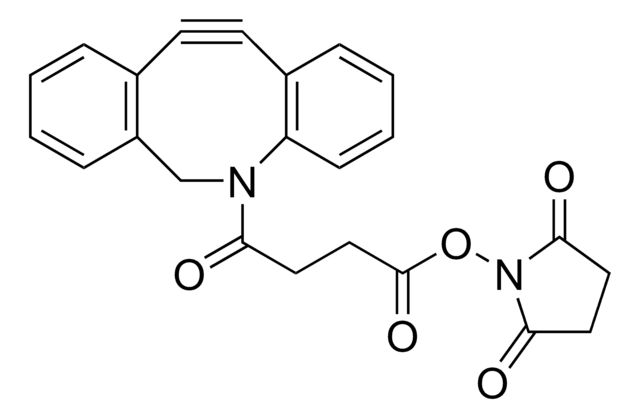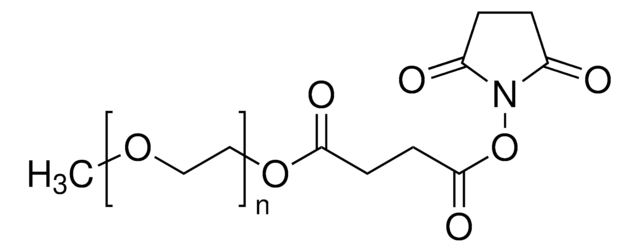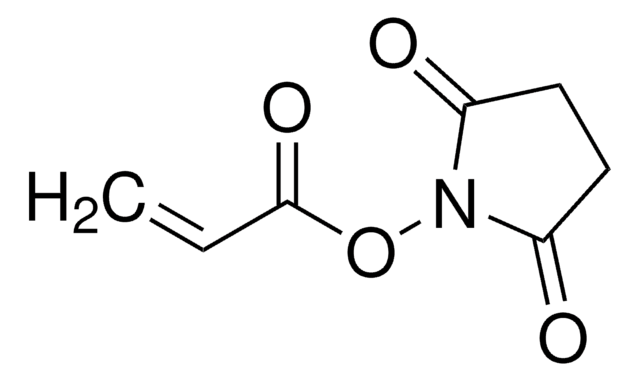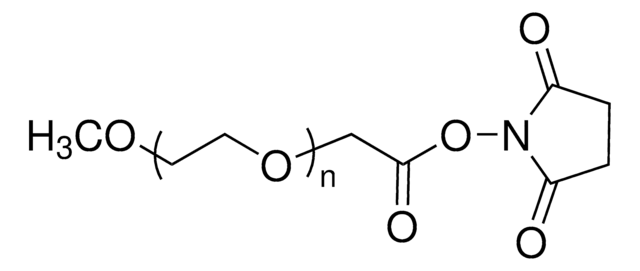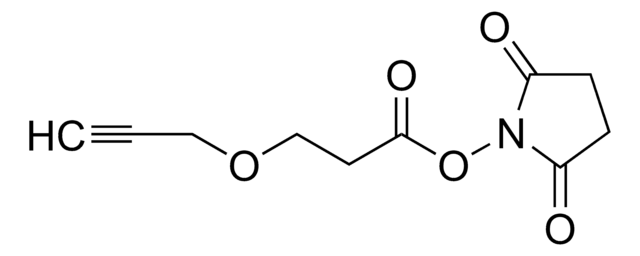P1162
Palmitic acid N-hydroxysuccinimide ester
≥98% (TLC)
Synonym(s):
N-(Palmitoyloxy)succinimide, N-Succinimidyl palmitate, Palmitic acid N-succinimidyl ester
Sign Into View Organizational & Contract Pricing
All Photos(3)
About This Item
Empirical Formula (Hill Notation):
C20H35NO4
CAS Number:
Molecular Weight:
353.50
Beilstein:
1547411
MDL number:
UNSPSC Code:
12352211
PubChem Substance ID:
NACRES:
NA.25
Recommended Products
Quality Level
Assay
≥98% (TLC)
form
powder
lipid type
saturated FAs
storage temp.
−20°C
SMILES string
CCCCCCCCCCCCCCCC(=O)ON1C(=O)CCC1=O
InChI
1S/C20H35NO4/c1-2-3-4-5-6-7-8-9-10-11-12-13-14-15-20(24)25-21-18(22)16-17-19(21)23/h2-17H2,1H3
InChI key
OTNHQVHEZCBZQU-UHFFFAOYSA-N
Looking for similar products? Visit Product Comparison Guide
Application
Palmitic acid N-hydroxysuccinimide ester has been used to couple a protein for fabrication of targeted delivery vehicles. It has also been used in the covalent attachment of palmitic acid to ovalbumin.
Useful in the synthesis of hexadecanoyl derivatives of amino- and thio-compounds such as amino acids, aminoacyl-tRNA, coenzyme A, thioglycolic acid, etc.
Biochem/physiol Actions
Palmitic acid N-hydroxysuccinimide ester is used in the covalent linking of protein to palmitic acid.
Storage Class Code
11 - Combustible Solids
WGK
WGK 3
Flash Point(F)
Not applicable
Flash Point(C)
Not applicable
Personal Protective Equipment
dust mask type N95 (US), Eyeshields, Gloves
Choose from one of the most recent versions:
Already Own This Product?
Find documentation for the products that you have recently purchased in the Document Library.
Ana Rute Neves et al.
Nanotechnology, 26(49), 495103-495103 (2015-11-18)
Nanotechnology can be an important tool to improve the permeability of some drugs for the blood-brain barrier. In this work we created a new system to enter the brain by functionalizing solid lipid nanoparticles with apolipoprotein E, aiming to enhance
Adam Edelstein et al.
Shock (Augusta, Ga.), 36(5), 451-457 (2011-09-23)
Translocation of bacteria and other luminal factors from the intestine following surgical injury can be a major driver of critical illness. Bile acids have been shown to play a key role in the loss of intestinal epithelial barrier function during
Preparation of immune stimulating complexes (ISCOMs) as adjuvants
Mowat AM and Reid G
Current Protocols in Immunology, 16(1), 2-11 (1995)
Cell-specific siRNA delivery by peptides and antibodies
Test, 502, 91-122 (2012)
Cell-specific siRNA delivery by peptides and antibodies
Methods in Enzymology, 502, 91-122 (2012)
Our team of scientists has experience in all areas of research including Life Science, Material Science, Chemical Synthesis, Chromatography, Analytical and many others.
Contact Technical Service